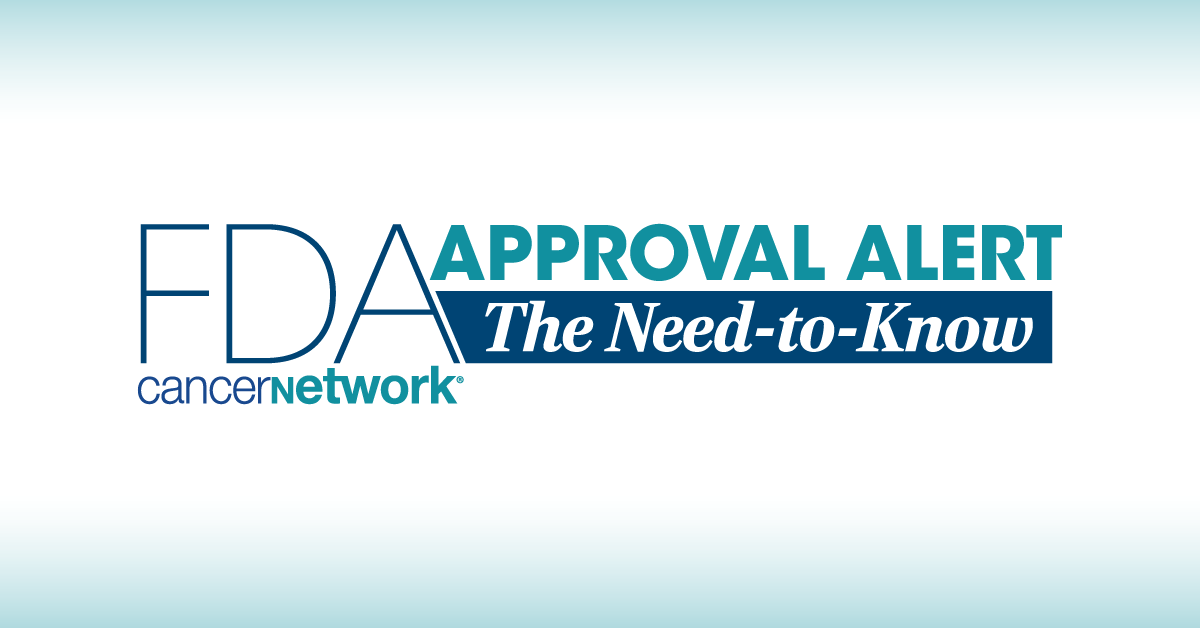FDA Approves Vorasidenib in IDH+ Astrocytoma/Oligodendroglioma
Phase 3 data from the INDIGO trial support the FDA approval of vorasidenib for select patients with grade 2 astrocytoma or oligodendroglioma.
With this approval, vorasidenib is the first available systemic therapy for patients with grade 2 astrocytoma or oligodendroglioma and susceptible IDH1 or IDH2 mutations.

The FDA has approved vorasidenib (Voranigo) for patients 12 years and older with grade 2 astrocytoma or oligodendroglioma harboring IDH1 or IDH2 mutations, according to a news release from the agency.1
With this approval, vorasidenib is the first available systemic therapy for patients with grade 2 astrocytoma or oligodendroglioma and susceptible IDH1 or IDH2 mutations.
Supporting data for the approval in this indication came from the phase 3 INDIGO trial (NCT04164901). Topline data showed that treatment with vorasidenib produced a statistically significant progression-free survival (PFS) benefit compared with placebo (HR, 0.39; 95% CI, 0.27-0.56; P <.0001). Additionally, the median time to next intervention was not reached vs 17.8 months in each respective arm (HR, 0.26; 95% CI, 0.15-0.43; P <.0001).
Frequent adverse effects (AEs) reported in the INDIGO trial included headache, COVID-19 infection, diarrhea, nausea, seizure, and musculoskeletal pain. Additionally, grade 3 or higher toxicities, specifically, included alanine aminotransferase and aspartate aminotransferase increases as well as neutrophil count decreases.
Additional findings from the INDIGO trial previously published in New England Journal of Medicine highlighted that the probability of survival and not receiving an additional line of treatment intervention was 85.6% (95% CI, 77.8%-90.8%) vs 47.4% (95% CI, 35.8%-58.2%) at 18 months and 83.4% (95% CI, 74.0%-89.6%) vs 27.0% (95% CI, 7.9%-50.8%) at 24 months across the vorasidenib and placebo arms, respectively.2 Investigators also reported that 11.3% and 35.6% of patients in each respective treatment group received another anti-cancer therapy. Based on subgroup analyses, PFS and time to next intervention benefits with vorasidenib extended across most subgroups, including those related to 1p/19q codeletion status.
In the international, double-blind, phase 3 INDIGO trial, 331 patients with grade 2 astrocytoma or oligodendroglioma harboring susceptible IDH1 or IDH2 mutations were randomly assigned to receive vorasidenib at 40 mg orally once daily or matched placebo. Treatment continued until progressive disease or unacceptable toxicity.
Investigators prospectively determined IDH1 or IDH2 mutation status by using the Thermo Fisher Scientific Oncomine Dx Target Test. Patients who experienced confirmed radiographic progression while receiving treatment in the placebo arm were eligible to cross over to vorasidenib. Those who received prior anti-cancer therapy such as radiotherapy or chemotherapy were excluded from enrolling on the trial.
The trial’s primary end point was imaging-based PFS according to blinded independent committee review. The key secondary end point was time to next anti-cancer intervention. Other secondary end points included objective response rate, overall survival, safety, and health-related quality of life.
Patients 12 years and older with histologically confirmed recurrent or residual grade 2 oligodendroglioma or astrocytoma based on World Health Organization 2016 criteria and centrally confirmed IDH1 and IDH2 mutation status were eligible for enrollment on the trial. Other requirements for study entry included having a Karnofsky performance status of at least 80, at least 1 prior surgery, no use of glucocorticoids, and adequate renal and hepatic function.
Prior data showed that the median patient age was 40.5 years (range, 21-71) in the vorasidenib arm and 39 years (range, 16-65) in the placebo arm. Among patients who received vorasidenib and placebo, respectively, most were male (60.1% and 52.8%), from North America (51.2% and 65.6%), and had frontal tumors (63.7% and 70.6%). Most patients in each respective group also had 1 prior surgery for glioma (75.0% and 82.2%), oligodendroglioma (52.4% and 51.5%), and IDH1-positive disease (97.0% and 93.3%).
References
- FDA approves vorasidenib for grade 2 astrocytoma or oligodendroglioma with a susceptible IDH1 or IDH2 mutation. News release. FDA. August 6, 2024. Accessed August 6, 2024. https://tinyurl.com/25r9fkvy
- Mellinghoff IK, van den Bent MJ, Blumenthal DT, et al. Vorasidenib in IDH1- or IDH2-mutant low-grade glioma. N Engl J Med. 2023;389:589-601. doi:10.1056/NEJMoa2304194